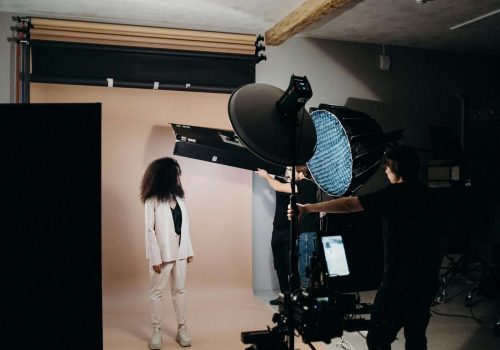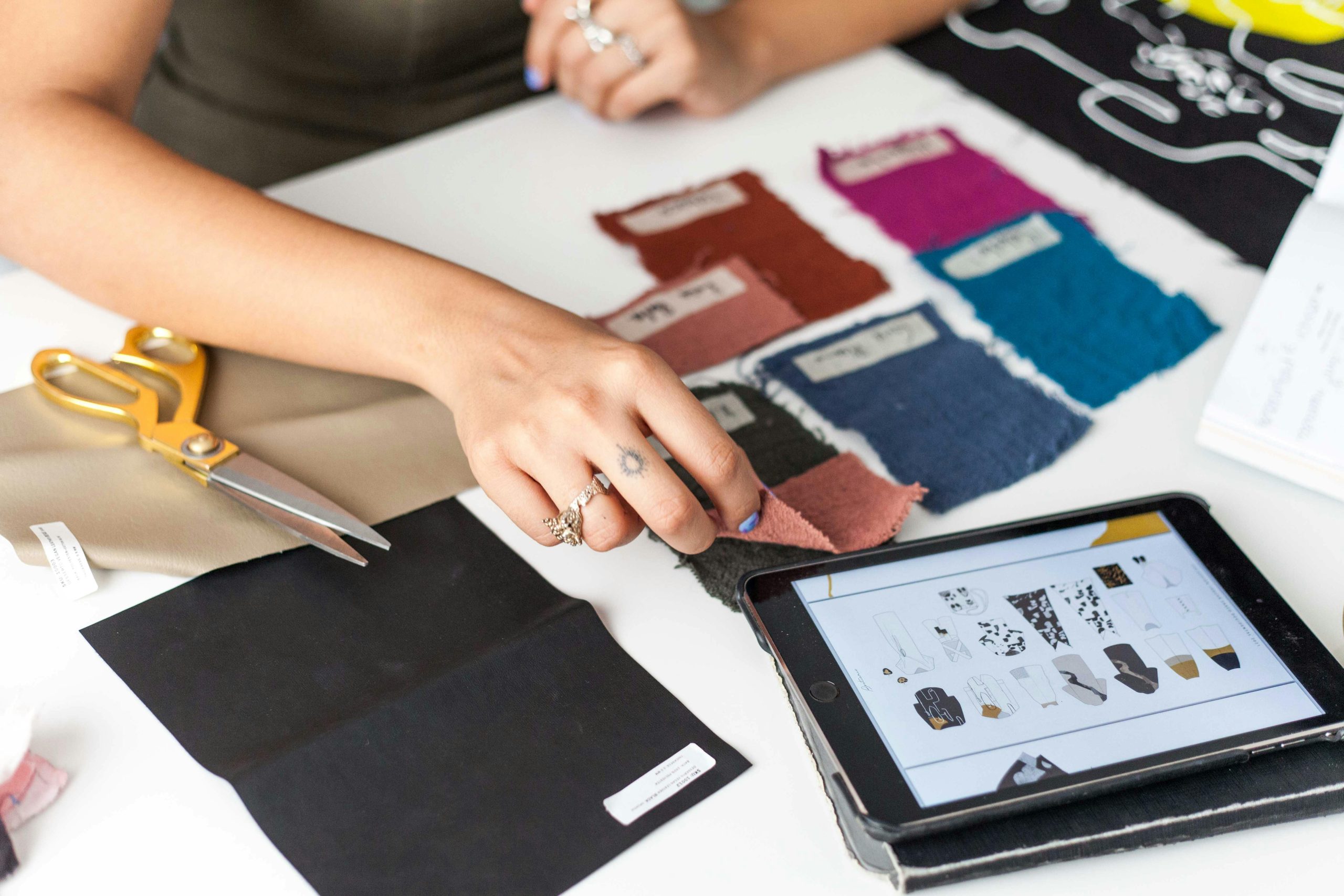How to Start My Clothing Brand ?
November 9, 2024
9 Essential Steps for Building a Brand That Lasts
To start a clothing brand from scratch is an exhilarating journey filled with creativity, challenges, and rewarding moments. It’s a path that combines passion, strategy, and adaptability, requiring both a structured approach and a visionary mindset. Here, we outline nine essential steps to guide you from ideation to launch, with tips, practical tools, and actionable insights that will help set your brand apart in a competitive market. Let’s dive in!

1. Define Your Brand Purpose
The purpose behind your brand is the “heart” of your journey—it’s the deeper reason your brand exists beyond the product itself. This purpose will guide every decision you make, from choosing materials to crafting messages that speak directly to your audience. When you define a clear purpose, you create a compass that leads the way. Imagine you’re on a hike up a mountain: without a clear purpose, each step can feel aimless. But with a purpose, every stride, no matter how challenging, has meaning. Your brand purpose should feel like this compass, guiding you through every stage of brand building.
Your purpose helps set your brand apart in a crowded market and builds a deeper, more meaningful connection with customers who resonate with your values. Begin by reflecting on what truly motivates you. Why do you want to launch this brand? Are you committed to producing sustainable apparel, or is your goal to disrupt fast fashion with a focus on quality and durability? Define this “why” in a simple yet powerful way. Using a framework like Simon Sinek’s “Golden Circle” (Why, How, What) can help you pinpoint and clarify your brand’s mission, vision, and unique value. Notion or Evernote can be helpful tools to organize your ideas as they evolve and keep a record of your brand’s foundation.
2. Identify Your Target Audience
Think of your target audience as your VIP guests. These are the people who will love, buy, and promote your brand. They are the ones who understand and connect with your message, style, and values. Defining who they are, what they like, and what they need is crucial in creating a brand that resonates. Knowing your audience is like knowing exactly who’s attending your dinner party—it allows you to tailor the experience in a way that makes them feel valued and understood.
Understanding your target audience helps enhance your marketing effectiveness and fosters stronger connections with those who genuinely align with your brand’s purpose. Conducting thorough market research using tools like Google Trends and Statista can reveal invaluable insights into your audience’s preferences, needs, and buying behaviors. To get a more detailed view, create buyer personas with tools like Xtensio. A persona can be as detailed as you like, covering your audience’s demographics, style preferences, and lifestyle habits. For example, if you’re creating a brand for eco-conscious Gen Z consumers, consider minimalist designs and sustainable materials to highlight your commitment to environmentally-friendly fashion.

3. Research Your Competitors
Understanding your competitors is crucial for standing out in the fashion industry. Imagine your market as a bustling city of shops and brands; before setting up your own, it’s essential to know what’s already out there. Competitor research allows you to see what’s working, what’s missing, and where there’s room for innovation. You’re not just looking to copy, but to identify gaps in the market that your brand can uniquely fill.
Researching competitors provides insight into what customers expect and what’s missing, helping you position your brand in a way that stands out. Tools like SEMrush or Ahrefs can be invaluable for analyzing competitors’ websites, popular keywords, and traffic sources. By studying their branding, product descriptions, and photography style, you may notice areas where your brand can excel. Perhaps their website lacks high-quality apparel photography that showcases texture and fit. Investing in professional clothing photography, like the services offered at 360GrowthLabs’ Apparel Photography, can give your brand a visual edge and attract a more discerning audience.
4. Develop Your Brand Identity
Brand identity is the visual and emotional fingerprint of your business. It goes beyond just a logo; it includes everything from colors and typography to the tone of voice that people associate with your brand. Think of your brand identity as the unique look, feel, and personality that makes your brand instantly recognizable and memorable.
Recent Posts
Follow Us
Follow us to explore more stories, insights, and daily inspiration we share
Ready to Turn Your Idea into Reality?
If you’ve got an idea that won’t let you rest, we’re ready to help. Contact us on WhatsApp, and let’s talk about how we can bring your vision to life with our full range of services.
A well-crafted brand identity builds recognition and trust. It’s about creating a cohesive, memorable impression that reflects the essence of your brand’s values and personality. You can start by sketching ideas in tools like Canva for initial mockups, or Adobe Creative Suite for a more polished look. Develop a style guide that includes logo usage, color palette, font styles, and tone of voice, ensuring consistency across your website, packaging, social media, and all other touchpoints. If design isn’t your strong suit, consider outsourcing to a professional on platforms like 99designs or Fiverr. Alternatively, explore 360GrowthLabs’ Brand Creation Services for comprehensive support in building a standout brand identity.

5. Craft Your Brand Story
Your brand story is the narrative that humanizes your business and gives it a unique personality. Every successful brand has a story that helps customers relate to it on a personal level. It’s more than just a timeline of events; it’s a journey that captures your motivations, challenges, and vision.
Crafting a brand story builds loyalty by creating an emotional connection with your audience. People are more likely to support brands that have a story they resonate with. Share the origin of your brand authentically, including the inspiration, the challenges, and the mission that drives you. If your brand promotes ethical production, explain why you’ve partnered with a private label clothing manufacturer who shares your values. For example, a story around sustainable fashion might explore how you source eco-friendly fabrics and work with suppliers to minimize environmental impact. Linking to reputable organizations like the Sustainable Apparel Coalition can strengthen your message and connect with eco-conscious customers.
6. Create a Unique Value Proposition (UVP)
In a market where customers have endless options, your UVP is the promise that sets you apart. It’s the simple statement of why customers should choose your brand over others. Think of it as your brand’s unique “wow” factor—the reason customers come to you and stay.
Your UVP clarifies what makes your brand special and attracts customers who value what you offer. To create an effective UVP, focus on the main benefits of your brand and the unique problem you solve. Keep it clear, concise, and memorable. For example, a sustainable fashion brand might say, “Eco-friendly fashion without compromise.” If your UVP highlights quality, craftsmanship, or unique style, emphasize this in your messaging, product descriptions, and branding. Check out 360GrowthLabs’ Clothing Brand Development Services for expert help in crafting a compelling UVP that resonates.


7. Develop a Brand Strategy
In a market where customers have endless options, your UVP is the promise that sets you apart. It’s the simple statement of why customers should choose your brand over others. Think of it as your brand’s unique “wow” factor—the reason customers come to you and stay.
Your UVP clarifies what makes your brand special and attracts customers who value what you offer. To create an effective UVP, focus on the main benefits of your brand and the unique problem you solve. Keep it clear, concise, and memorable. For example, a sustainable fashion brand might say, “Eco-friendly fashion without compromise.” If your UVP highlights quality, craftsmanship, or unique style, emphasize this in your messaging, product descriptions, and branding. Check out 360GrowthLabs’ Clothing Brand Development Services for expert help in crafting a compelling UVP that resonates.
8. Build a Strong Online Presence
In today’s digital age, having a robust online presence is non-negotiable. Your website and social media platforms are where most customers will interact with your brand, making it essential for establishing credibility and connecting with a wider audience.
Building a strong online presence boosts brand visibility and fosters customer trust. Use platforms like Shopify or WooCommerce to create a user-friendly e-commerce website that reflects your brand’s identity. Quality apparel photography is also crucial, as it can make or break a potential sale. Studies show that 93% of consumers prioritize visual content when making purchasing decisions, so investing in high-quality images is essential. For professional help, consider 360GrowthLabs’ Online Store Development, which includes website setup and visual content creation tailored to your brand.
9. Monitor and Adapt Your Brand Over Time
Launching a brand is just the beginning of the journey. To continue growing and remain relevant, it is essential to regularly monitor its evolution and adapt it to market changes, consumer expectations, and emerging trends. A successful brand is one that knows how to evolve without losing its identity.
It’s important to implement tracking mechanisms to evaluate your brand’s performance: analyze customer feedback, sales indicators, social media engagement, and market trends. This information allows you to identify strengths to maintain, as well as areas that need improvement. For example, if you find that certain values or messages no longer resonate with your audience, it may be necessary to adjust your communication or even revisit some aspects of your offering.
Adjustments may also involve design, packaging, or distribution strategy. Stay tuned to your customers and don’t hesitate to reassess your positioning if necessary. A flexible brand, capable of adapting while staying true to its core values, is a brand that is ready to endure and thrive in an ever-evolving environment.


Starting a clothing brand is an incredible journey filled with both challenges and rewards. By following these nine essential steps—from defining your brand purpose to building a strong online presence—you’ll set the foundation for a brand that truly resonates with your target audience. Branding is ultimately about authenticity, consistency, and connection. As you embark on this path, remember that 360GrowthLabs offers a one-stop solution to launch a fashion brand, providing end-to-end support, from apparel production to digital marketing, ensuring your vision becomes a reality.
Recent Posts
Ready to Turn Your Idea into Reality?
If you’ve got an idea that won’t let you rest, we’re ready to help. Contact us on WhatsApp, and let’s talk about how we can bring your vision to life with our full range of services.





